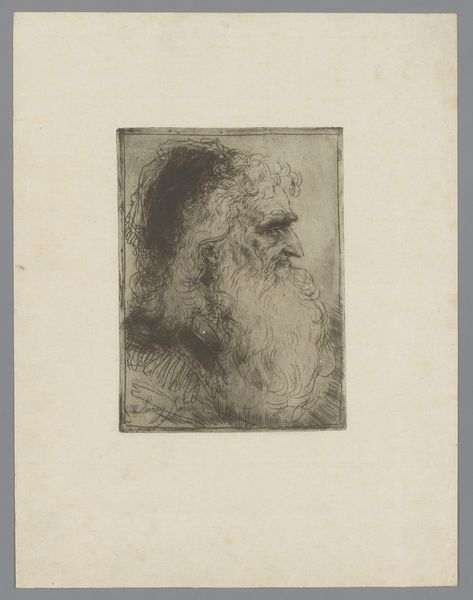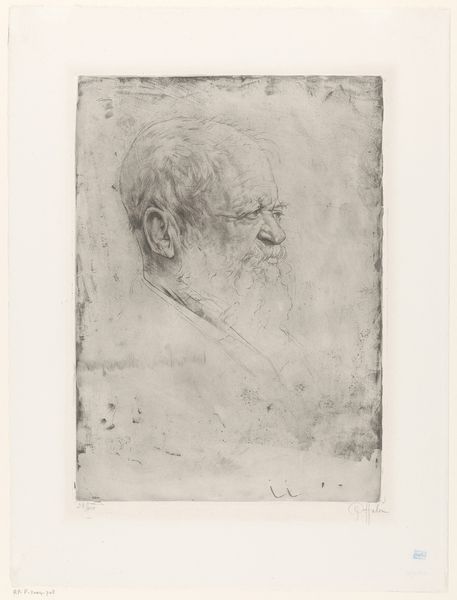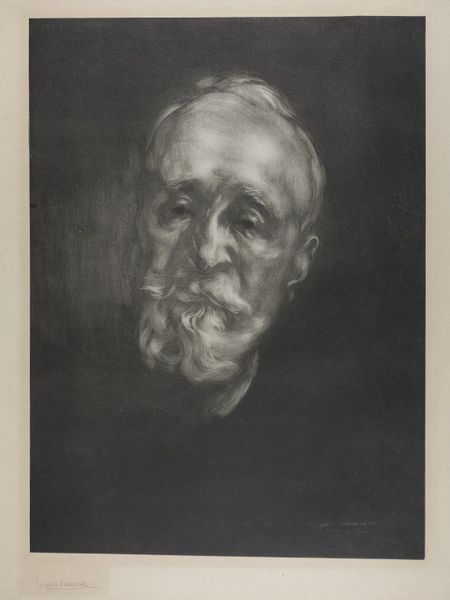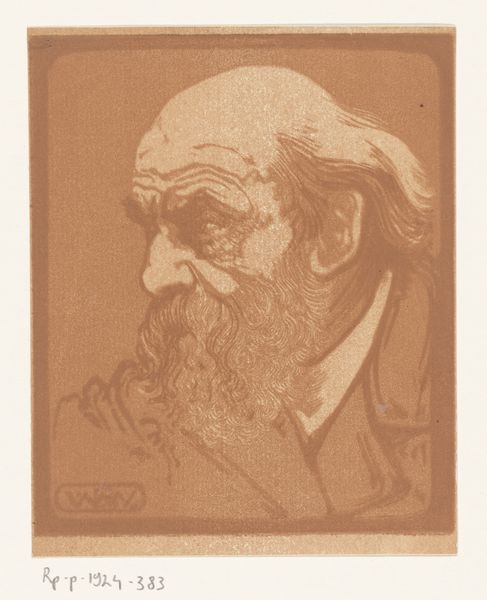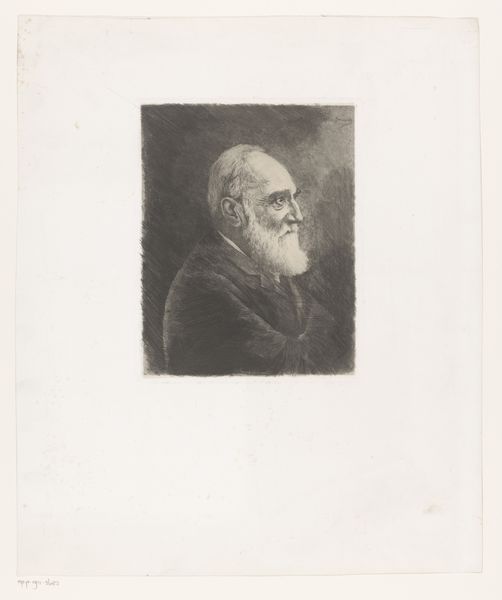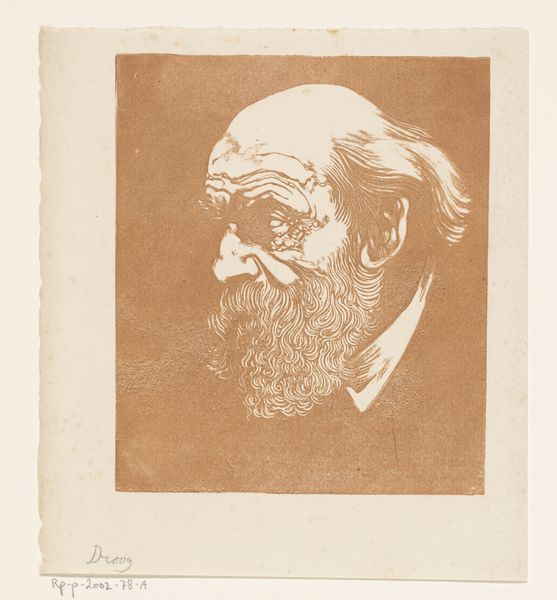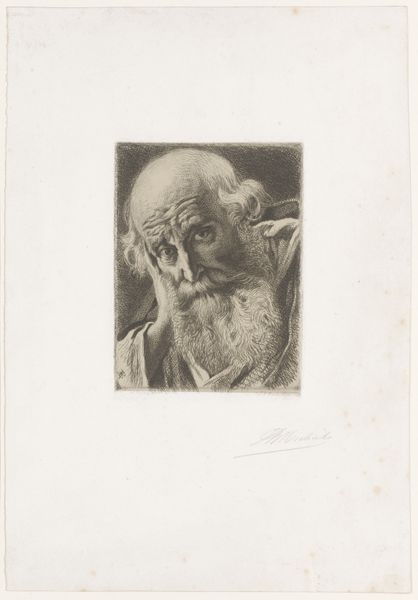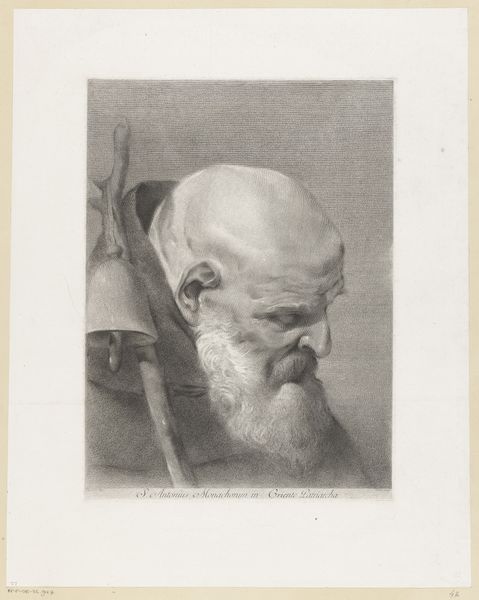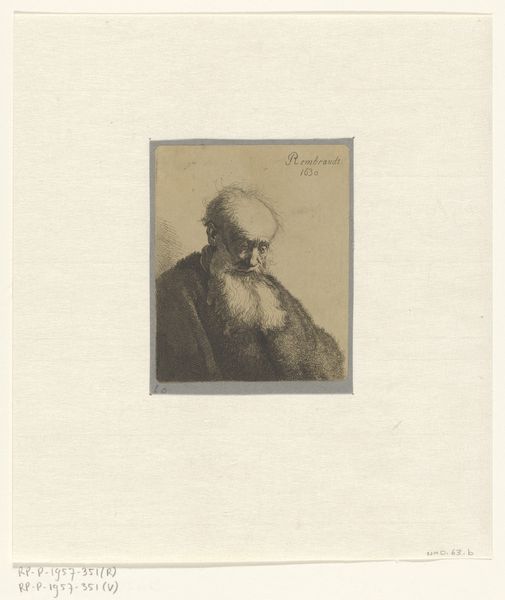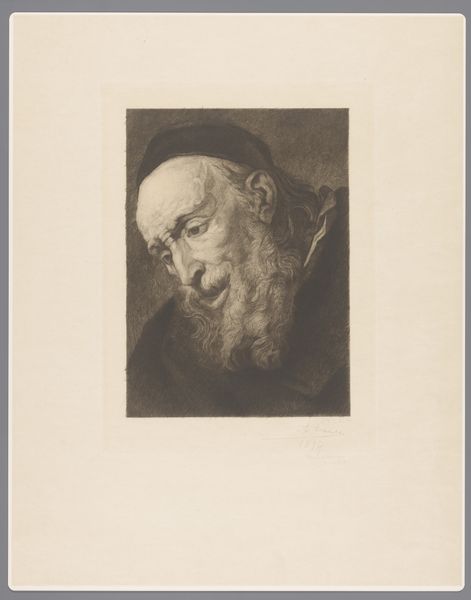
drawing, print, etching
#
portrait
#
drawing
#
self-portrait
# print
#
etching
#
caricature
#
portrait reference
#
expressionism
#
history-painting
Dimensions: 228 × 157 mm (image/plate); 334 × 276 mm (sheet)
Copyright: Public Domain
Max Klinger created this self-portrait in 1918 using etching, a printmaking technique with a long and fascinating history. To make an etching, you coat a metal plate with a waxy, acid-resistant substance. The artist then draws through this coating, exposing the metal. When the plate is submerged in acid, the exposed lines are eaten away, creating grooves. Ink is then forced into these grooves, and the plate is pressed onto paper, transferring the image. Look closely, and you can see the dense network of fine lines that define Klinger's face and beard. The quality of these lines—their depth, thickness, and direction—determines the distribution of light and shadow, giving the image its tonal richness. The controlled, laborious process of etching is well-suited to Klinger's intense self-examination. Printmaking has always been deeply connected to social and political life, offering a means to reproduce and disseminate images widely. Klinger’s choice of this medium suggests his desire to communicate his artistic vision to a broad audience, rather than creating a unique, precious object. This democratic impulse elevates printmaking beyond mere reproduction, recognizing its power as an original art form.
Comments
No comments
Be the first to comment and join the conversation on the ultimate creative platform.
